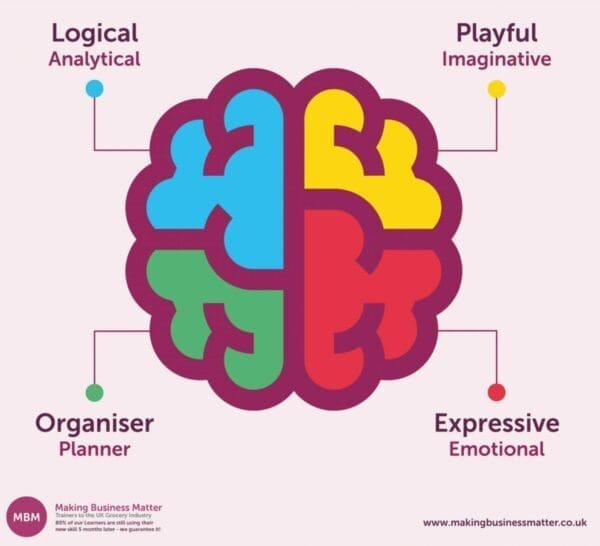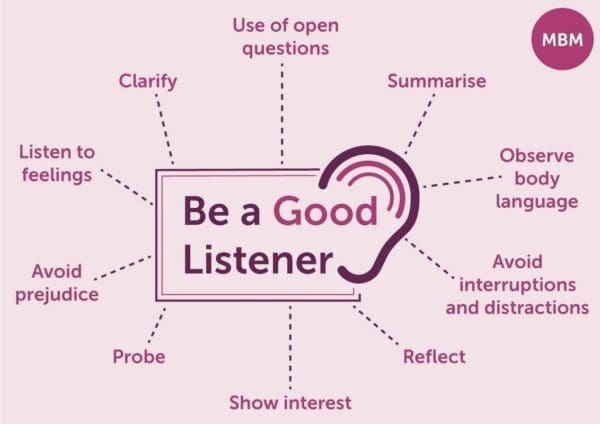“Just Jack, you’re a visionary.”
This is one of the most influential, actionable, and useful sentences that has ever been said to me.
I felt like Harry Potter after he was told; “You’re a wizard, Harry.” I’d been assigned a project to spend the next eight weeks creating. Part of this particular assignment was the pitch. Among the filmmaking methods I was taught, it was also very important to my teachers that we learn about selling. An attempt to make it in the media industry with nothing but raw talent is an unwise attempt to make.
The skills to convince someone else that your raw talent is worth their hard-earned capital is absolutely key. In any industry. Thus came the concept of pitching. Not only did I have to seek the approval of teachers, like in previous assignments, now I had to convince the entire class that my idea was worth carrying out.
I was incredibly nervous. No coffee that morning – which made everyone else nervous too. Just Jack walking into class without a half-drunk cup of coffee in his hand is basically unheard of. I was exceptionally anxious.
The Pitch
Having walked around my living room probably more times than you’ve had hot dinners, I felt as ready as I could be. My name was called. I stood in front of 28 fellow students, 3 teachers, a handful of very bright lights, and a rolling camera. Looking around at each of them, I just began. Having fallen into what I thought was a serious waffling session, I looked away from the camera and found 31 people listening more intently than I’d ever imagined.
The pitch finished. There was no usual discussion among teachers. The vote was unanimous. I got the approval. How? At the time, I actually had no idea. I spoke with my teacher, afterward, who told me he thought I’d painted such a detailed image of the final result that he felt he could go off and make it himself. He said “tell your crew what you want, like you just told everyone in there, and this thing will be immense. Just Jack, you’re a visionary.”
I’ve never smiled wider.

What is a Visionary?
A visionary, or rather, a visionary leader specifically, is someone with a vision. But you knew that I know. Unfortunately, there’s not a whole lot more to it than that. At its simplest, a visionary leader has a very clear vision of the end goal. The result. They’ll work hard to articulate it accurately – this is the real key. Before I break down the traits of a visionary leader, let me analyse them.
The captain of a ship, sailing through thick fog, is attempting to find buried treasure. As the captain, they choose to stand at the very front with binoculars. On this ship, nobody but the captain can see as far as he can. The captain sees land with the treasure most likely located there but only he can articulate the land, the treasure, and the journey to reach it. Turning to his crew, he must work with them individually, and as a team, to navigate the ship through the fog and onto the island.
The visionary leader is the person with the binoculars. Binoculars that no one else has. This can be summarised in a single role: the film director. Of course, that’s the role I would choose as the summary but regardless of personal endeavors, the film director has to be a visionary leader. The crew can’t work without a vision to follow and the director can’t bring the vision to life without a crew to carry it out.

7 Traits of a Visionary Leader
Visionary leaders tend to have specific traits, things to spot. If you find yourself in a leadership role, utilising these traits will solidify a great leader-team relationship. Visionaries have to adapt and work with their team if anyone wants to achieve anything. Similarly, if you find yourself working for/with someone in a leadership role, try and spot these traits in them. You can benefit from understanding that relationship too. Win-win.
1. Perseverance and Determination
Grit. Determination. A big key to success, as you know. A visionary leader regards this highly on the list of attributes to gaining success. Once a vision is created, once you can actually look at the end goal in your mind, it’s significantly harder to stop. It’s like a jigsaw puzzle. You can see the final picture on the box, and when part of the puzzle matches up with the picture, you become motivated to continue making this happen. The picture is the vision, the puzzle is the work you and your team put in to piece it together.
The other aspect or reason, for this is HBDI. For those that are not familiar, we have a great HBDI Ultimate Guide here on our blog. Check it out. HBDI splits the brain into 4 colours: yellow, red, green, and blue. The yellow brain thinks long-term. Sees the bigger picture. Creates a vision. A good visionary leader is extremely likely to be yellow-dominant in their brains.
Whilst vision is a yellow trait, another yellow characteristic is the search for angles. Looking for and finding different approaches and ways to tackle and solve the problem. This is why a visionary leader is determined. They can formulate another approach, even if the first ten failed.
Actionable tip: as a visionary leader, work towards finding new approaches. When stuck, use the team. Different types of people will think differently and this is an invaluable resource when looking for new ideas. As a team member, share. This tip is true for a multitude of traits and this is because it’s so important. A good team dynamic will encourage all ideas. Ideas are always good until proven otherwise.
2. Resourcefulness
A leader is only a leader because they lead people. A leader without a team is just a person. A team without a leader is a group of people. One needs the other to qualify as their respective roles. This is part of what makes leader-team relationships so important.
A visionary leader works closely with their team. The job, simply put, is to get from A to B. A is the problem, B is the solution. A big-picture thinker, one of the aforementioned qualities of visionaries, will not only be able to see B but can recognise that they cannot go from one to the other alone. This is a key trait of a visionary leader. Due to the characteristics mentioned, this kind of leader knows how to utilise their team for the best possible outcome.

Your visionary leader may recognise that you are blue-dominant in your brain. Blue refers to facts, statistics, logic. Put simply. So, as the captain of the ship, your yellow-thinking visionary leader will recognise your strengths and assign you to figure out everything the ship must avoid when making its way to land.
Another team member may be green-dominant. Organisation, order. Put simply. Your yellow-thinking, visionary leader will recognise this and may suggest that this team member ensures everyone knows their role and is always in the right place when needed. Organisation.
Actionable tip: as a visionary leader, play to the strengths of your team. Working ‘smart’ rather than just hard may look like a team-building exercise before the problem is tackled. This will give you the opportunity to recognise the strengths of each member, which you can capitalise on later. As a team member, stay in your comfort zone.
This is odd advice compared to the majority, but the team needs individual people sticking to individual roles. Role-crossing is fine in certain situations but for the most part, it’s easier for the leader to lead a team committed to their roles.
3. Patience and Understanding
As a team member, you don’t rebel against the leader. It irritates everyone to a great extent and simply makes everyone’s lives harder. This is a well-known concept. A lesser-known concept, however, is the reverse. As a leader, don’t tick off your team members. The less they like you as a leader, the less motivated they become.
This, in turn, leads to the first concept happening anyway. No one wants to work hard and smart for someone they think is a complete… I’ll let you finish that one (we’ve all worked for that manager). The point is, listening to your team and working through ideas is paramount. Everyone needs to feel heard. If you feel heard, not having your idea put into practice feels like much less of a personal kick in the teeth.

Actionable tip: As a visionary leader, listen. There will be situations in which you know inside 3 seconds that the idea from one of your team is not going to work. Let them explain it. Work through it with them and provide an actual reason as to why it’s not going to work. Get the rest of the team onboard by doing this, too.
The team member will feel less ‘cast-aside’ and their ideas will most likely improve after. This wastes a lot less time than dismissing someone abruptly and then dragging them through the process after they no longer want to work for you.
Actionable tip: As a team member, share. A visionary leader will want to explore the ideas of their team. It’s how you’ll reach the end goal and the leader knows this. If your idea isn’t utilised, work towards a better one. Play to your strengths to ensure the teams success.
4. Risk-Taking
Yellow-dominant visionary thinkers favour the taking of risk over the ignorance thereof. This comes largely from the traits of this kind of brain. Tenacity and determination lend themselves to risk because, when all other options are out, the risky ones are still there. The more determined you are, the more likely you are to exhaust all options before crawling all the way back to square one.
The upside of this is that your risk-taking leader might just land the team a whole lot closer to success. They might reach the goal fully, in fact. As a team under leadership, it’s important to do two things. Firstly, support the risk. Red and yellow-dominant brains of the team will most likely be forthcoming with support (Red-dominance refers to emotion, spirituality, and communication.) We must support the risk to provide motivation for the leader, and thus the rest of the team.
This is where the green and blue-dominant team members come in: the second thing. Playing devil’s advocate. Again, greens and blues will most likely be forthcoming with this anyway. The downside of such risk-taking is that, as a visionary leader, they will be focused almost solely on the end result. This, whilst being a beneficial trait, also has its drawbacks.

Losing short-term focus is one of them. A good visionary leader will recognise this in themselves and utilise the right team members to outline just how risky an endeavor actually is. From here, the leader of the team can make an informed and balanced decision.
Actionable tip: As a visionary leader, utilise the right team members at the right time. That team-building exercise from trait 2 may come in handy here. As a team member, remember to support and oppose decisions fairly. Help your leader reach a well-informed decision.
5. Accountability
Leading nicely on from the last trait – leaders must be accountable. Whilst a visionary leader can see the puzzle-picture better than anyone else, they can also see when it’s not being put together correctly. Risky decisions as aforementioned can be the source of this.
The job of a visionary leader is to articulate their vision as best as possible to the rest of the team. This means that decisions will consider every team member’s opinion. Ultimately, however, the buck always stops with the person in charge. Accountability is very important. The leader must recognise as early as possible that the ship is sailing in the wrong direction. It’s then their job to utilise the team and steer it back on track. If the vision has been well-articulated, it should not be difficult doing this.
Actionable tip: Both leaders and team members need to have the vision at the forefront of their minds as much as possible. Whilst the leader’s job is to recognise faults, the team’s job is to fix them.
6. Open-Mindedness
This is unsurprisingly very important for a visionary leader. The most open minds are the most susceptible to new ideas. This means they are most susceptible to good ideas. This leads very quickly to a flowing waterfall of new approaches. As aforementioned, the more someone feels heard, the more likely they are to speak. Any idea is a good idea until proven otherwise, especially at the beginning of solving a problem.
Actionable tip: as a leader, be as open minded as possible. Remind your team that it is impossible to reach good ideas until the bad ones have been recognised, improved upon and dismissed. As a team member, work to produce any ideas (again, especially in the beginning). The more ideas – the more room for good ones to bring themselves forth.
7. Emotional Intelligence
For anyone who’d like to read up on emotional intelligence – we have a fantastic 8-minute read on the subject. Check it out.
A leader of any kind will benefit significantly from better emotional intelligence. A visionary leader, however, needs to work specifically closely with their team. Remember – the film director can’t do anything without their crew. Coming back to a previous point, making your team happy about working for/with you is crucial to the entire group’s success.

Someone who is emotionally intelligent can recognise emotions in themselves and their team. These emotions can be utilised for a better outcome, or they can be subsided so as to prevent them from hindering decision-making. This is talked about more in Corporal Decision’s article – which touches on the hindrance of emotions in decision-making. Emotions can cloud judgement. When dealing with a problem with which you must solve with your team, aim to be emotionally aware always.
Actionable tip: recognise emotions in your team, or in your leader and strive to understand where they are coming from. Sometimes useful, sometimes not, the key is understanding them to begin with.
The Actionable Tips
Although this article, like all, is padded with information and explanation, the real tangible bits of info are the actionable tips. Here’s a recap:
For the Leaders
- When stuck, use the team. Different types of people contribute differently. All have their strengths – utilise them.
- Listen. Team members that feel heard will be all the more forthcoming with ne ideas. You need those new ideas, so listen to them.
- Recognise and be accountable for faults. Use the team to steer back in the right direction.
- Be open minded. Any idea is a good idea until proven otherwise.
- Strive for emotional intelligence. Recognise benefits and drawbacks in emotion and decide accordingly.
For the Team Members
- Share. Aim to initiate or continue a flow of ideas, this will always benefit the team.
- Commit to your role. A team of people who understand and play to their roles consistently is much easier to lead. Success will come quicker.
- Support and oppose decisions fairly. Support or oppose risk – this genuinely depends on your opinion in the matter. Don’t be afraid to say what you feel is best for the team.
- Strive for emotional intelligence. Recognise your own emotion and decide accordingly.
Be a visionary, when necessary.
Action: For even more useful content on leadership, check out our ultimate guide on Leadership Skills.




